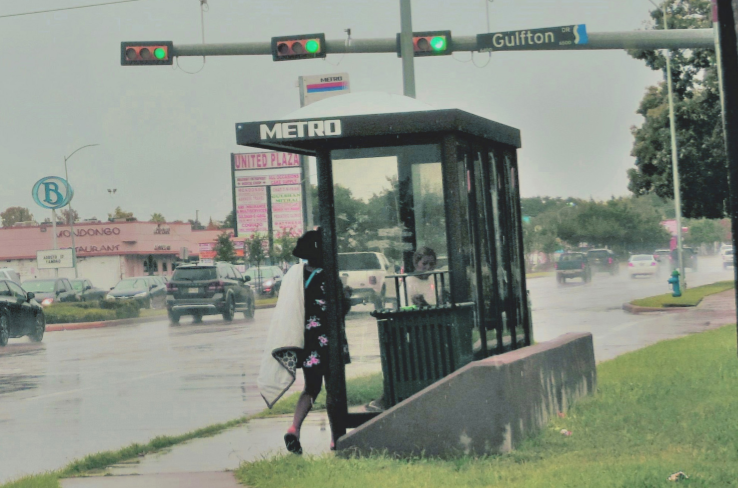"The car was going really fast and hit a man who was crossing the street on his bike."
"The man in the wheelchair was crossing the street at a four-way stop. A car almost hit him but then the driver got out of the car and attacked the man in the wheelchair."
"Cars turn the corner too fast or run the stop sign and they don't stop for buses or children crossing."
"A woman was walking to the bus stop to get to work when she was run over at the intersection. She died."
"Several of my students have almost been hit. In December a student was critically injured in a hit and run."
These were just a few of the comments collected from surveys administered around Gulfton, Houston's densest neighborhood, between December 2017 and April 2018. Part of a new Kinder Institute report on street safety and the value of community input in shaping neighborhood planning decisions, the comments reveal the dangerous conditions residents of the largely immigrant community face every day as they move about their neighborhood.
In many ways, Gulfton is unique but it also exemplifies the challenges confronting Houston as it attempts to address public safety concerns on city streets through efforts like the Safer Streets initiative, which seeks to identify and design interventions for some of the most dangerous intersections in the city. Begun in the five pilot neighborhoods under the mayor's Complete Communities initiative, Safer Streets was later expanded across the whole city.
As one of the Complete Communities neighborhoods, Gulfton has an action plan that details the need for safer streets, particularly around parks and schools, as well as dedicated bike routes. Roughly 16 percent of Gulfton residents do not have a car, almost double the citywide rate. And roughly a third of workers over the age of 16 use some alternative mode to get to work, including public transportation, walking, biking or carpooling, according to the action plan. To better serve all road users, the plan calls for sidewalk and crossing improvements, expanded bike lanes and other changes.
But, as the latest Kinder Institute report shows, because the analysis relied partly on crash data, the report missed some key insights. By asking respondents to identify dangerous streets and locations of near-miss incidents, the report gathered a robust, community-informed dataset that complements crash data. Where respondents identified 26 problematic street segments, for example, "the action plan mentions only Dashwood Drive and Renwick Drive among its sidewalk improvement priorities" with others included as longer-term priorities. The action plan also gathered community input through 36 meetings, but according to that plan, only 134 people participated and 36 of those were city staff members and another 38 were representatives from non-profit organizations. By contrast, the Kinder Institute report gathered 306 responses, including from 157 respondents who either lived in Gulfton or adjacent zip codes.
The respondents reflected on their experiences moving around the neighborhood and shared potential fixes to many of the dangers they identified. Some of the areas that stood out as particularly dangerous include the area surrounding the "neighborhood's social service hub at Hillcroft Avenue and High Star Drive, schools throughout the community and large apartment complexes" at the northern end of the neighborhood. Most of the reported near-miss incidents involved pedestrians and cars and often included vulnerable populations like young children, older adults and people who use wheelchairs. The report also found a range of barriers to moving around comfortably throughout the neighborhood, including poor sidewalk connectivity, doubts about transit reliability and dangerous street conditions as well as concerns about crime and unwanted contact.
"The Complete Communities planning process has initiated and increased enthusiasm for meaningful community engagement but more should be developed to overcome barriers to participation," the report concludes. "Efforts by the City, METRO and other entities should consider the specific needs highlighted by Gulfton residents and integrate this local knowledge into the decision-making process."
Read the full report here.

